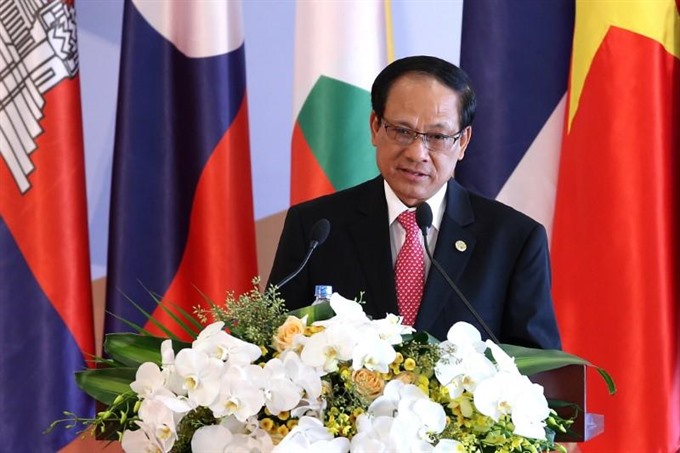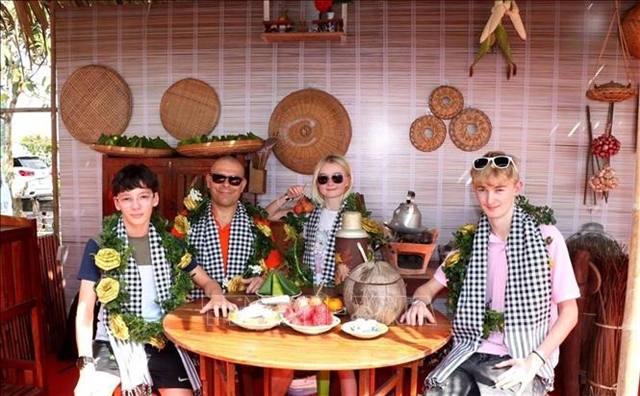 Features
Features

Lê Lương Minh, secretary general of ASEAN
 |
| Lê Lương Minh, secretary general of ASEAN |
ASEAN @50 series
By Lê Lương Minh, secretary general of ASEAN
2017 marks the golden jubilee of ASEAN’s establishment as a regional organisation founded on the ideals of peace, prosperity and harmony. Five decades of evolution and development has brought ASEAN an unprecedented level of economic growth and peace dividends that have galvanised its position as one of the world’s most successful inter-governmental groupings, and transformed Southeast Asia into a vibrant and dynamic region.
The ASEAN Community Vision 2025 and its three corresponding Community Blueprints, adopted at the 27th ASEAN Summit in November 2015 in Kuala Lumpur, provide the overall guidance of ASEAN’s work between 2016 and 2025. They reaffirm ASEAN’s commitment to forge ahead together, and in doing so, reinforce the importance of ensuring that benefits of integration are felt by the ordinary citizens in the region, thereby achieving a people-oriented, people-centred ASEAN Community.
To achieve that, it is fundamental that ASEAN must first and foremost preserve the current peaceful and stable regional environment so that the 628 million ASEAN people can continue to enjoy the opportunities brought about by its Community-building process.
Over the past five decades, many mechanisms have been established – spearheaded by ASEAN – for political and security cum economic cooperation within the region, and between ASEAN and external partners. Such mechanisms have resulted in tangible outcomes for ASEAN, laying the foundation for economic and socio-cultural development. Moving forward, ASEAN must continue to uphold its centrality and maintain its cohesiveness in the face of an increasingly unpredictable geostrategic and geopolitical global environment. ASEAN will need to always be “Friends to All, Threat to None”. To date, 87 countries/organisations have established diplomatic relations and appointed their Ambassadors to ASEAN. The number of non-ASEAN Contracting Parties to the Treaty of Amity and Cooperation in South East Asia has also grown to 25 and ASEAN continues to receive requests from various countries to establish formal partnerships. One way of enhancing interfaces with the world is to remain proactive in deepening cooperation and collaboration with external partners and parties.
Economically, ASEAN’s resilience will be enhanced to buffer repercussions of unfolding global uncertainties. ASEAN’s viability, inclusive growth and integration will be given high priorities to ensure that the region continues to prosper amid the rising trend of populism and protectionism. The journey of the ASEAN Economic Community (AEC) is a testimony to ASEAN’s commitment to its regional economic integration agenda. Through collective efforts, national and regional economic resilience has been upheld in the face of structural changes, economic crises and policy uncertainties in the region and beyond. ASEAN’s commitment to open regionalism will lead it to a more prominent role in the regional and global economic architecture. Moving forward, the AEC will need to continue to be relevant to its stakeholders and deliver benefits to all. To this end, more effective stakeholder consultation and participation is required, including with the private sector. Swift and successful conclusion of the Regional Comprehensive Economic Partnership (RCEP) negotiations and continued efforts to further narrow the development gaps so as to promote a more equitable growth within the region are among top priorities
Similar efforts will continue to be exerted in advancing the ASEAN socio-cultural agenda. Constant adaptation and evolution in the approaches and mechanisms to make them more effective, inclusive, and responsive to the challenges in building a people-oriented, people-centred Community will be critical. The challenges will become increasingly cross-cutting, and the impact amplified given the increasing interdependency across countries, all of which make it compelling for the ASEAN Member States to deepen and broaden cooperation.
ASEAN, with all its diversities, bound by ties of friendship and legitimate shared interests, through regional cooperation and integration, have so far delivered to its people the dream of a prosperous and peaceful community with enhanced political cohesion, economic integration and social responsibility, narrowed development gaps within and among its Member States and greater physical, institutional and people-to-people connectivity. Such regional cooperation integration has benefitted not only Southeast Asia and its people, but also contributed significantly to the efforts to secure a better future for the international community at-large.
Community-building is a continuous and forward-looking process. While no one can claim to know exactly how the world will evolve in the next decades, the future of ASEAN will be always in the hands of its people who have all reasons to be optimistic.VNS
Time for an Asian-Asean century




